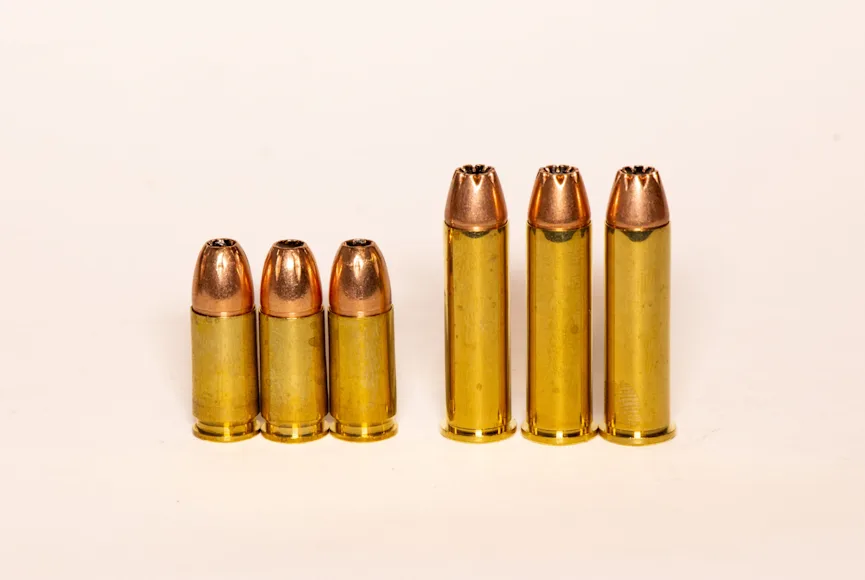_We may earn revenue from the products available on this page and participate in affiliate programs. Learn more ›
_
When it comes to the .357 vs 9mm, the comparison is a bit like apples and oranges. The two cartridges are vastly different and typically fired from different types of handguns. With a few exceptions, the .357 Magnum is a revolver cartridge and most often the 9mm Luger is fired from a pistol. Their similarity is that they use bullets of nearly an identical diameter. So why bother with comparison at all? Well, you might be trying to decide if you want a revolver or a pistol, and .357 Magnum and the 9mm Luger are, arguably and respectively, the best option
for each handgun type.
Some History
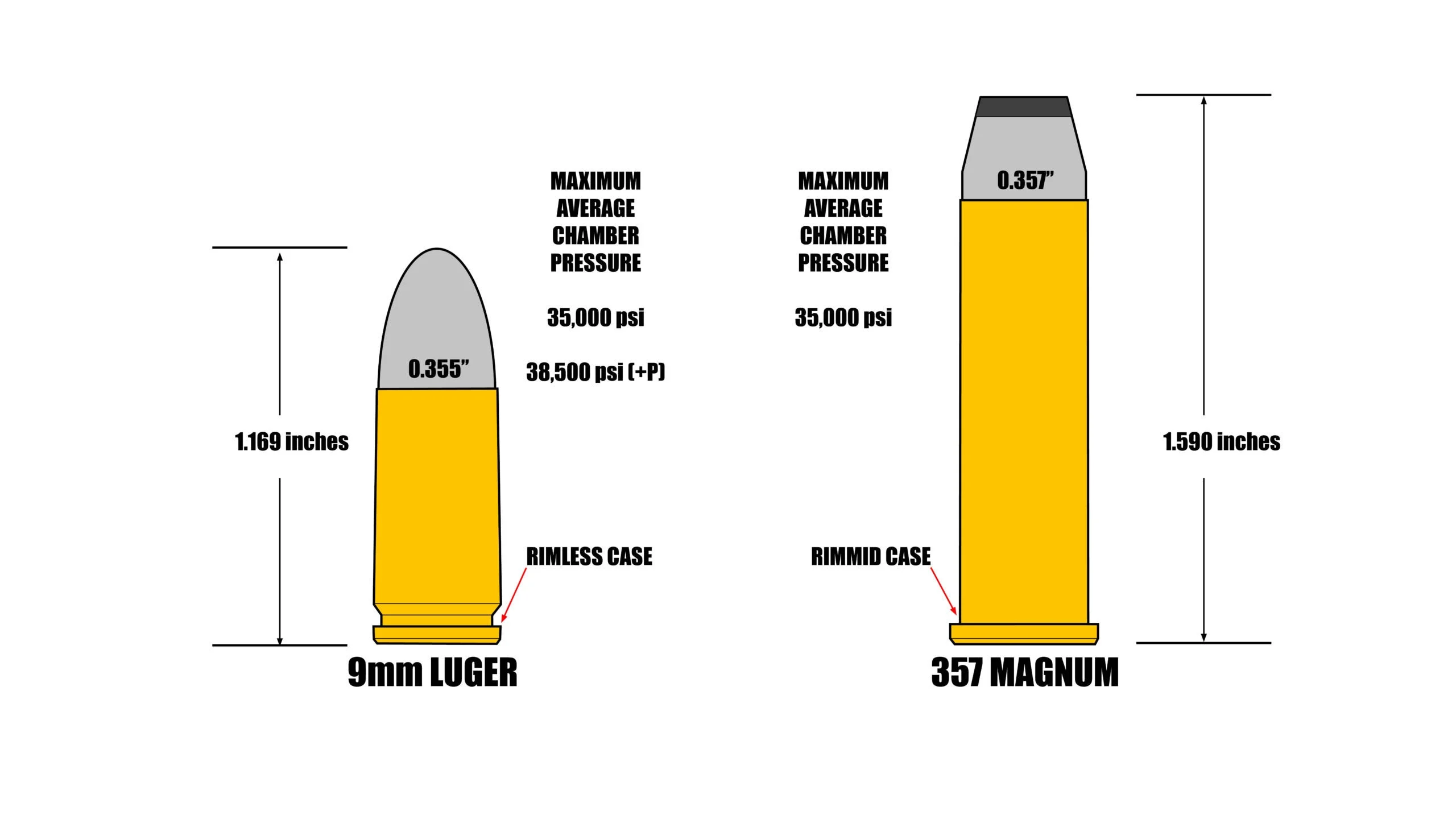
The 9mm Luger, also known as the 9×19 and 9mm Parabellum, was developed right at the beginning of the 20th century by Austrian firearms designer Georg Luger. It was used by the German military in both world wars and has since become the most popular pistol cartridge for military, law enforcement, and civilian use all over the world. The .357 Magnum was introduced in the mid-1930s and is essentially a lengthened and more powerful version of the 38 Special. Housed in Colt and Smith & Wesson revolvers, it became the most trusted handgun cartridge used by law enforcement. However, in the late 1960s, police agencies began to transition to the 9mm pistol because it was easier to shoot and offered a higher capacity.
Technically Speaking

For two cartridges that fire bullets of an almost identical diameter, the .357 Magnum (0.357-inch) and the 9mm Luger (0.355-inch) could not be more different. The .357 Magnum cartridge case is rimmed to work in revolvers and the 9mm Luger case is rimless to better suit operation and cycling in semi-automatic pistols. The .357 Magnum is the more powerful of the two, but with standard loads, the .357 Magnum and the 9mm Luger operate at the same maximum average chamber pressure (9mm +P ammunition is actually loaded to a higher pressure than the .357 Mangum). Loaded 357 Magnum cartridges are also about 36 percent longer than loaded 9mm Luger cartridges.
Ballistic Comparison

Since both cartridges use bullets of nearly an identical diameter, and since they’re both loaded to similar pressures, you’d expect their external ballistics to be similar, too, but they aren’t. Because the .357 Magnum cartridge case can hold a lot more gunpowder, it’s capable of delivering substantially better external ballistics. Generally, the .357 Magnum will push bullets of the same weight about 30 percent faster than the 9mm Luger. This also translates to more energy; .357 Magnum loads can hit as much as 70 percent harder.
Recoil
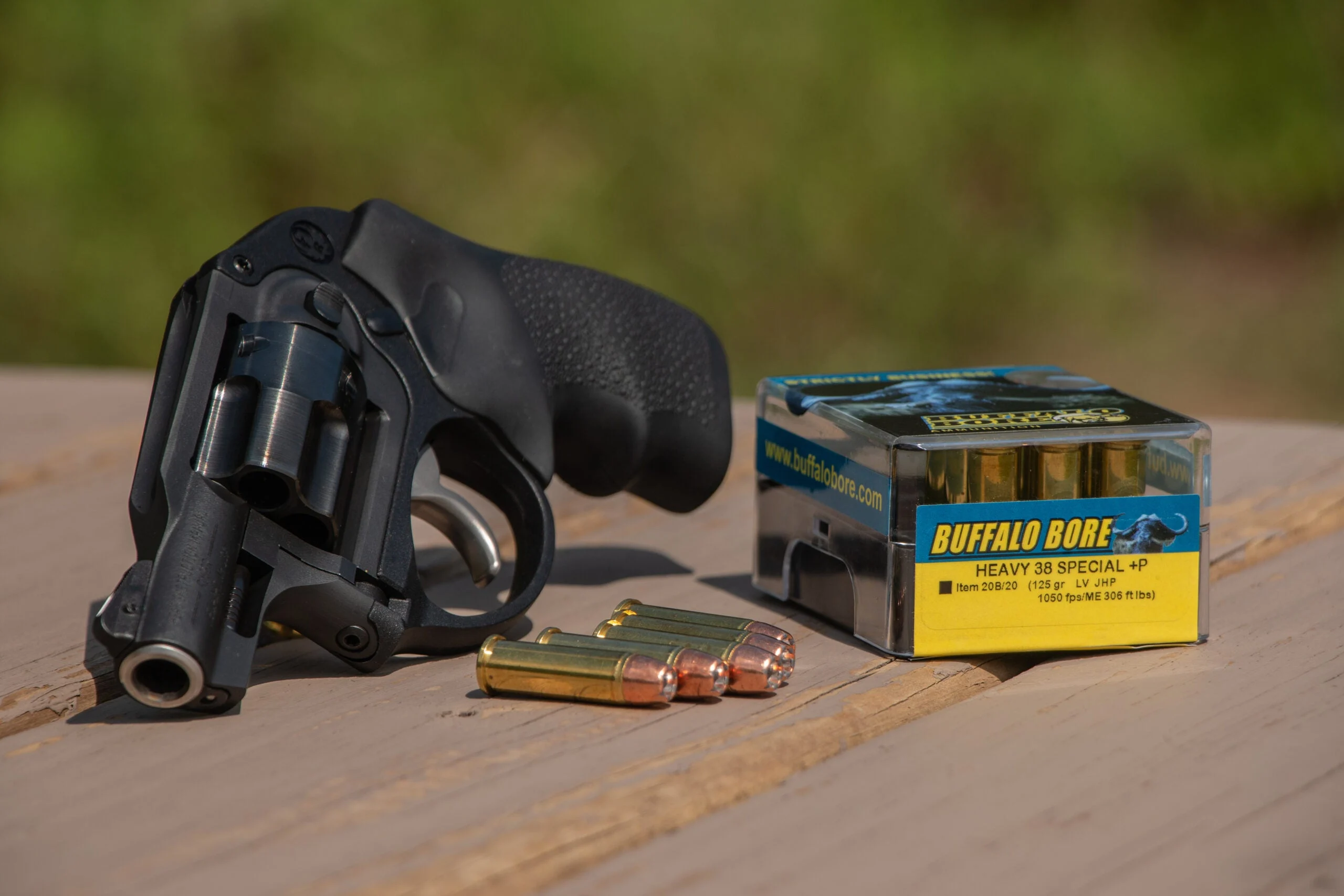
There are compact and lightweight revolvers in 357 Magnum, but they’re a handful even with +P 38 Special ammunition. Sabastian “Bat” Mann
As it is with all centerfire handgun cartridges, higher velocities translate to more recoil. It’s impossible to circumvent Newton’s third law. However, given the types of handguns available in .357 Magnum and 9mm Luger, recoil numbers can be misleading. In the supplied chart, 357 Magnum recoil was calculated with a 42-ounce Colt Python, and the 9mm Luger with a 40-ounce Colt 1911. Given handguns of similar weight, the 357 Magnum recoils with about twice as much force. However, most modern polymer framed 9mm Luger handguns weigh a lot less than 40 ounces. If you run the numbers with a 17-ounce Glock 43X in 9mm, the difference in recoil is not as drastic.
357 vs 9mm Versatility
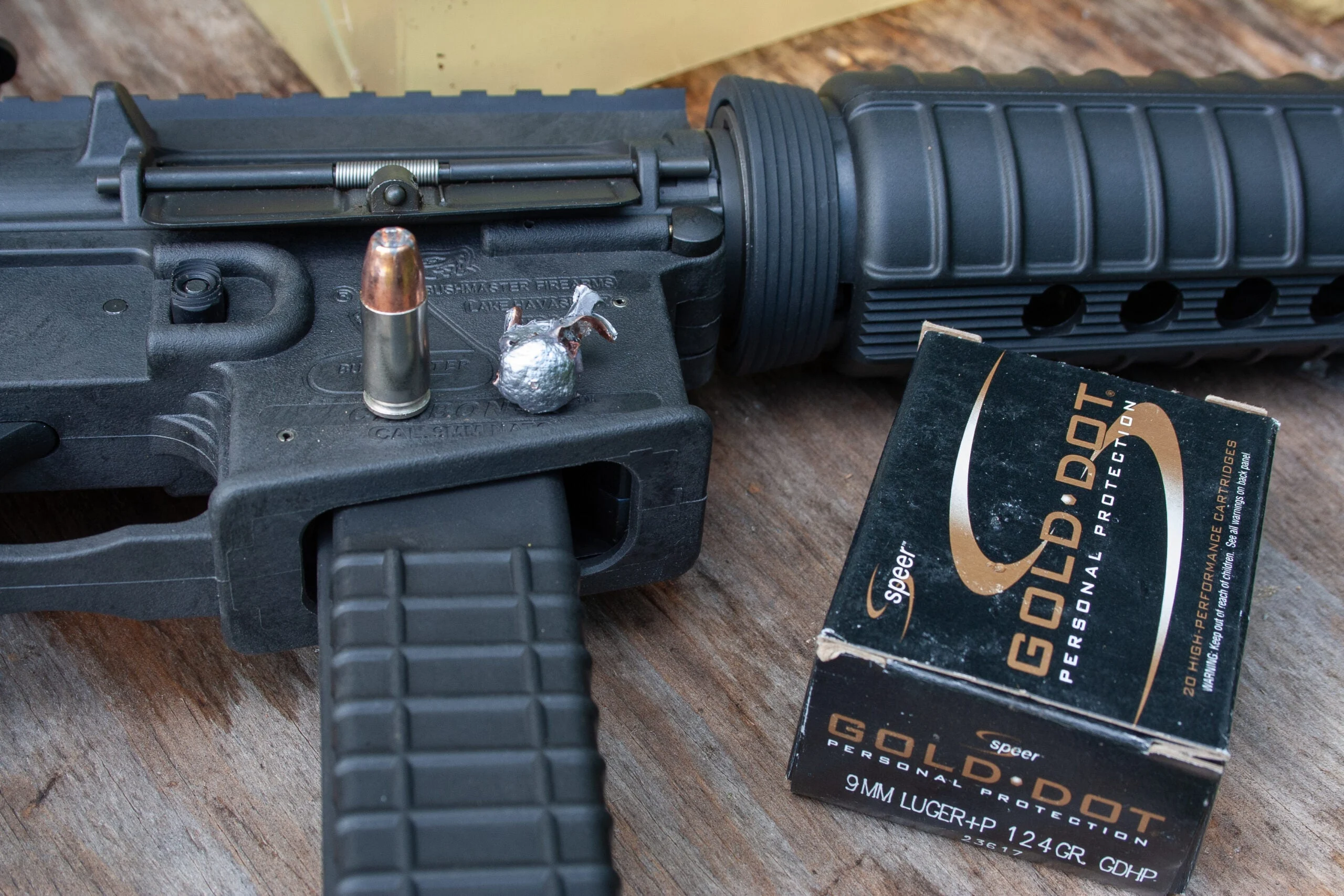
Some semi-automatic carbines are chambered for the 9mm Luger. Sabastian “Bat” Mann
The .357 Magnum has a considerable edge when it comes to versatility. This is partly because .357 Magnum revolvers can chamber and fire .38 Special ammunition. And, depending on the load, .38 Special ammunition can be less powerful or deliver very similar ballistics to the 9mm Luger. This, combined with the wide power range a .357 Magnum revolver can deliver makes it suitable for casual plinking, competition, self-defense, and even big game hunting
. There are more factory loads available for the 9mm Luger, but if you add in the factory .38 Special loads, ammunition options equal out.
Some shooters also like to have a handgun and rifle that can share ammunition, and with the .357 Magnum, there’s a variety of lever-action rifles to choose from. Ruger even offers a bolt-action .357 Magnum rifle. There are some semi-automatic carbines available for the 9mm Luger, and in some cases, they can even share magazines with certain 9mm pistols. There are also 9mm revolvers, .357 Magnum pistols, and some .357 Magnum revolvers like the Ruger Blackhawk Convertible come with a separate cylinder for 9mm Luger.
357 vs 9mm Application
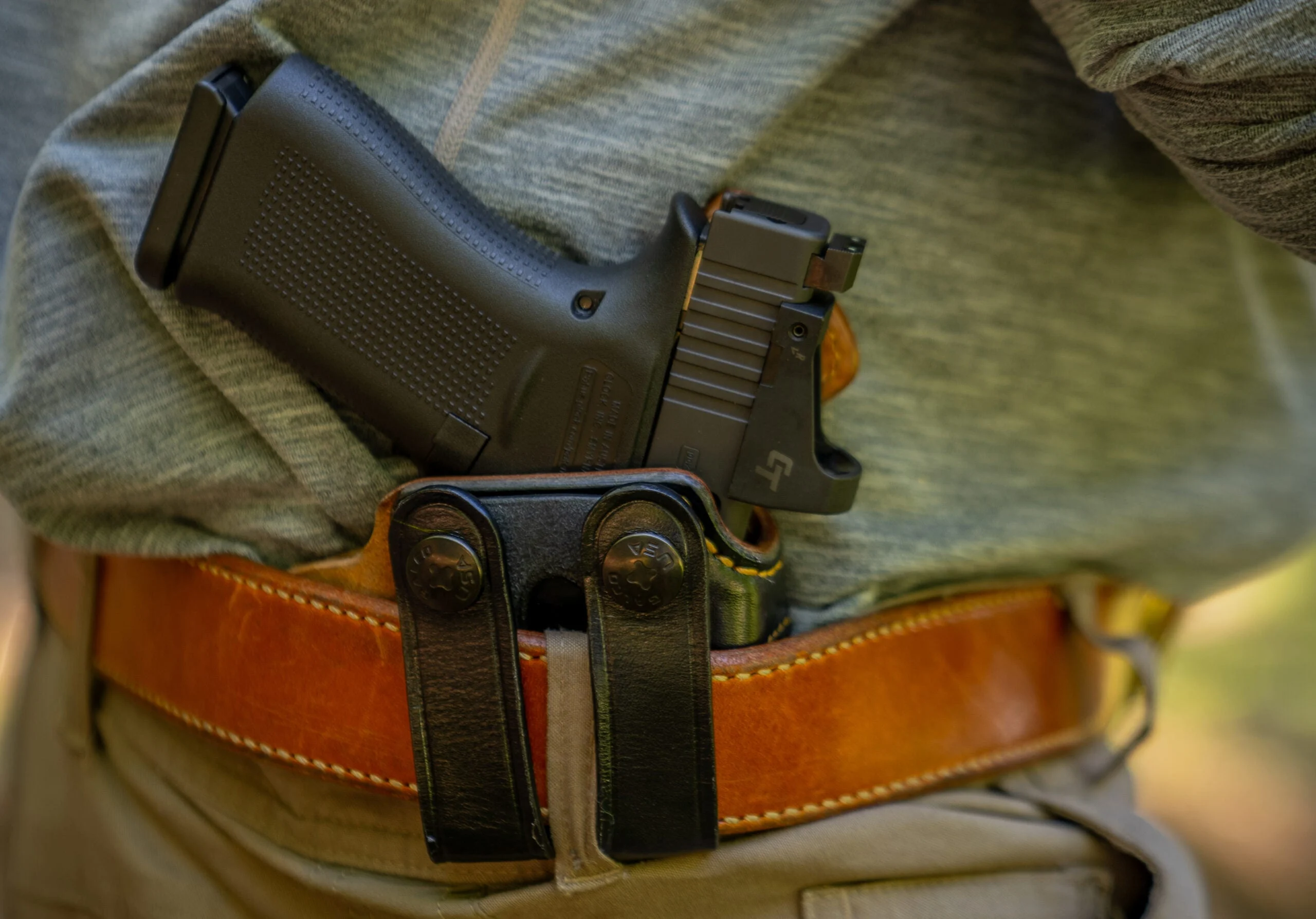
The true forte of the 9mm pistol is personal protection and concealed carry. Sabastian “Bat” Mann
In addition to trying to first decide whether you want a revolver or a pistol, the best way to make the decision between these two handgun cartridges is to consider application. What is it you want to do with a revolver or pistol chambered for either of these cartridges?
Recreational Shooting: If you want to have fun on the range punching holes in paper, ringing steel, and ventilating pop cans, handguns chambered for both cartridges can deliver plenty of enjoyment at a moderate cost. With the exception of a revolver that can fire .357 Magnum, .38 Special, and 9mm Luger ammunition, we’ll call it a tie.
Competition: Handgun competitions vary. There are fast-action competitions where capacity and ease of shooting gives the 9mm pistol the advantage, and in some of these competitions special categories are set aside for revolvers. Other competitions focus more on precision and distance where the flat trajectory and the high energy needed to topple steel targets is better suited to a .357 Magnum revolver. Tie again.
Self-Defense: For personal protection, a compact and easily concealed handgun
is what’s most often needed. The .357 Mangum does have an advantage in terminal performance, but most .357 Magnum revolvers are large and heavy. Those that are small and light are unpleasant to shoot unless loaded with .38 Special ammunition. Unless you’re looking for protection from bad beasts like big bears, a compact, high-capacity, 9mm pistol is generally a better choice.
Hunting: There are a few 9mm Luger loads suitable for feral hogs and deer-sized game. But with the .357 Magnum, there are a lot more ammunition options that deliver a lot more power and much flatter trajectories. For the dedicated big game hunter, the .357 Magnum cartridge is definitely the clear cut winner.
Given the differences in these two cartridges, maybe the best approach to the 357 vs 9mm debate is to own both a .357 Magnum revolver
and a 9mm pistol. If you throw in a .22 Long Rifle pistol or revolver, it’s hard to imagine you’d ever need any other type of handgun.

